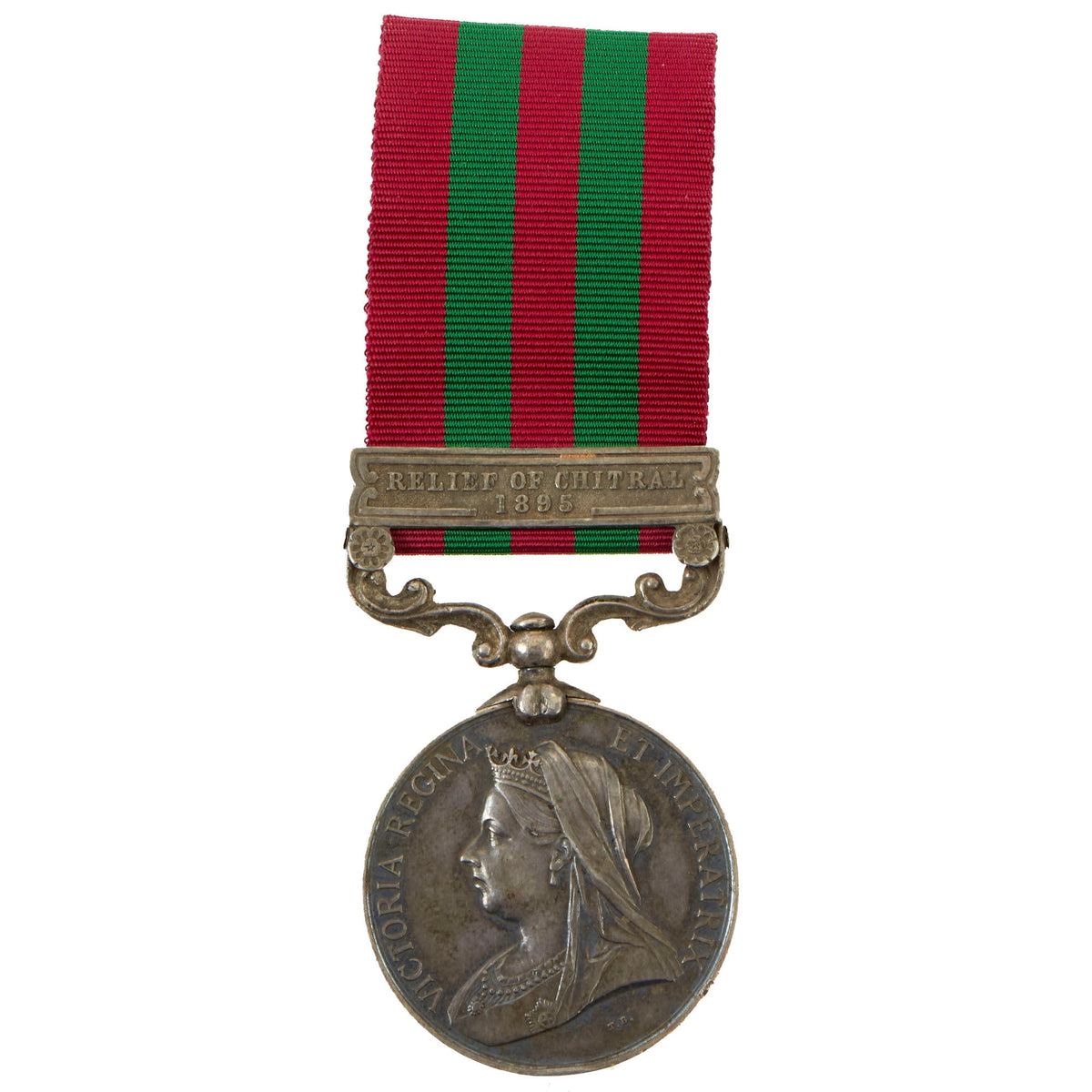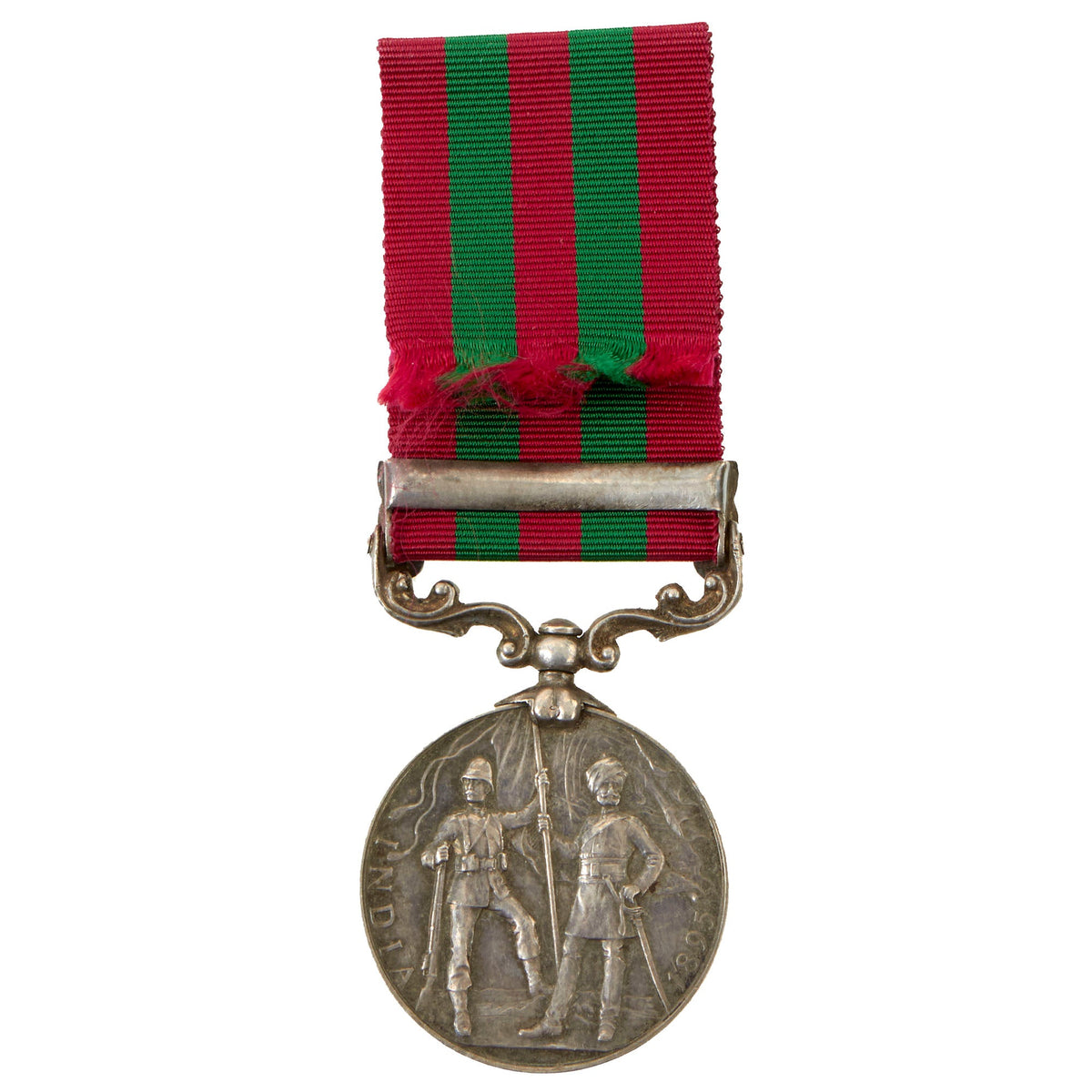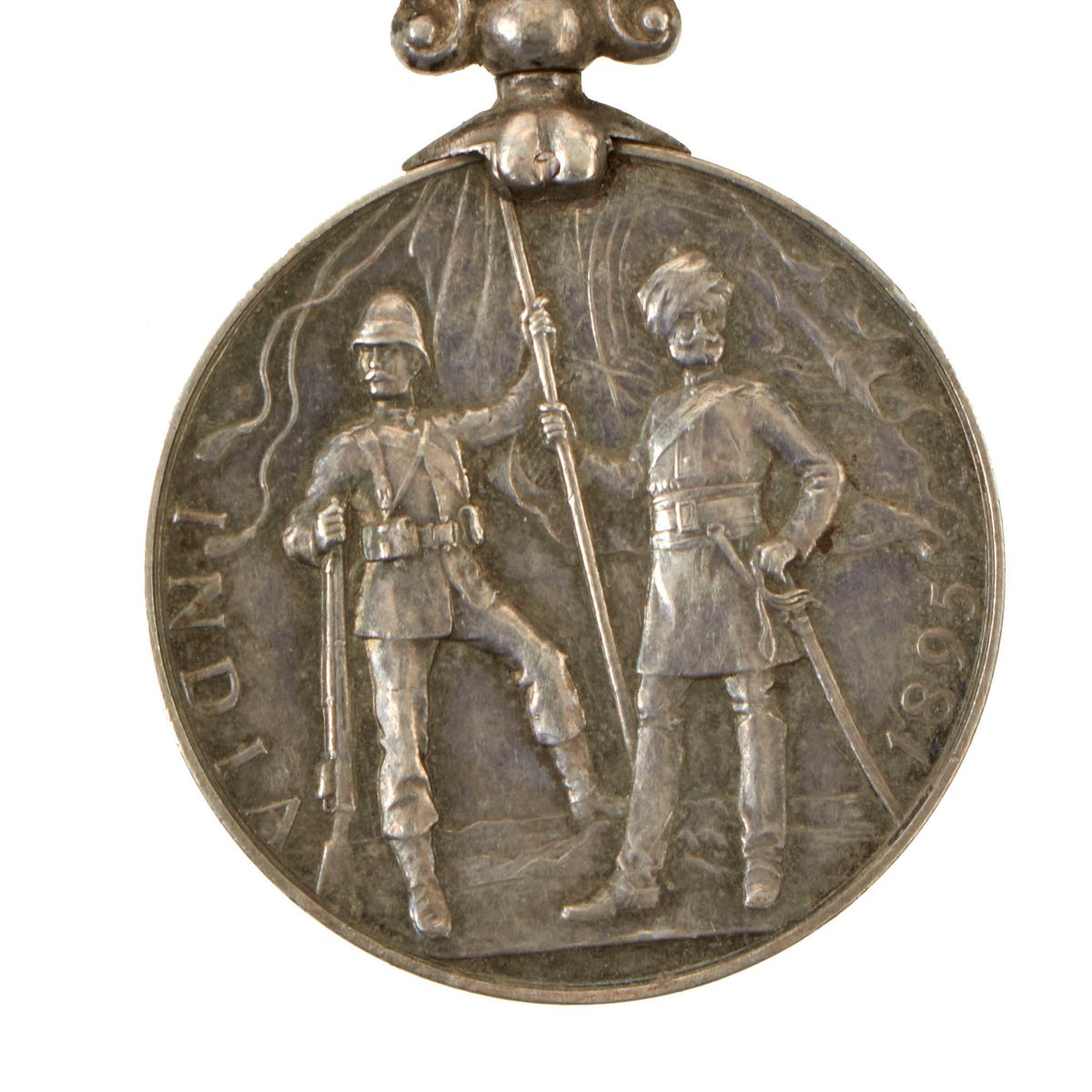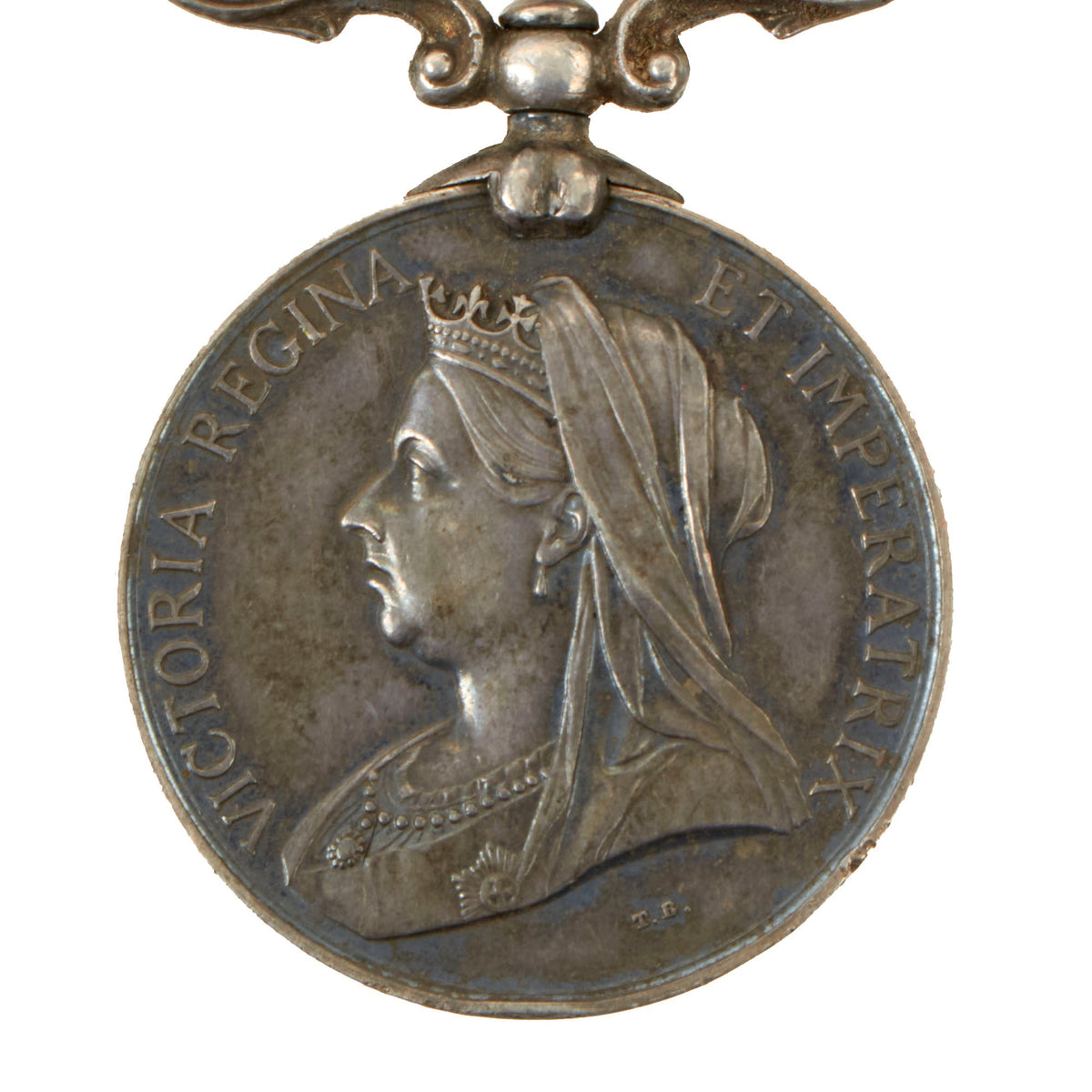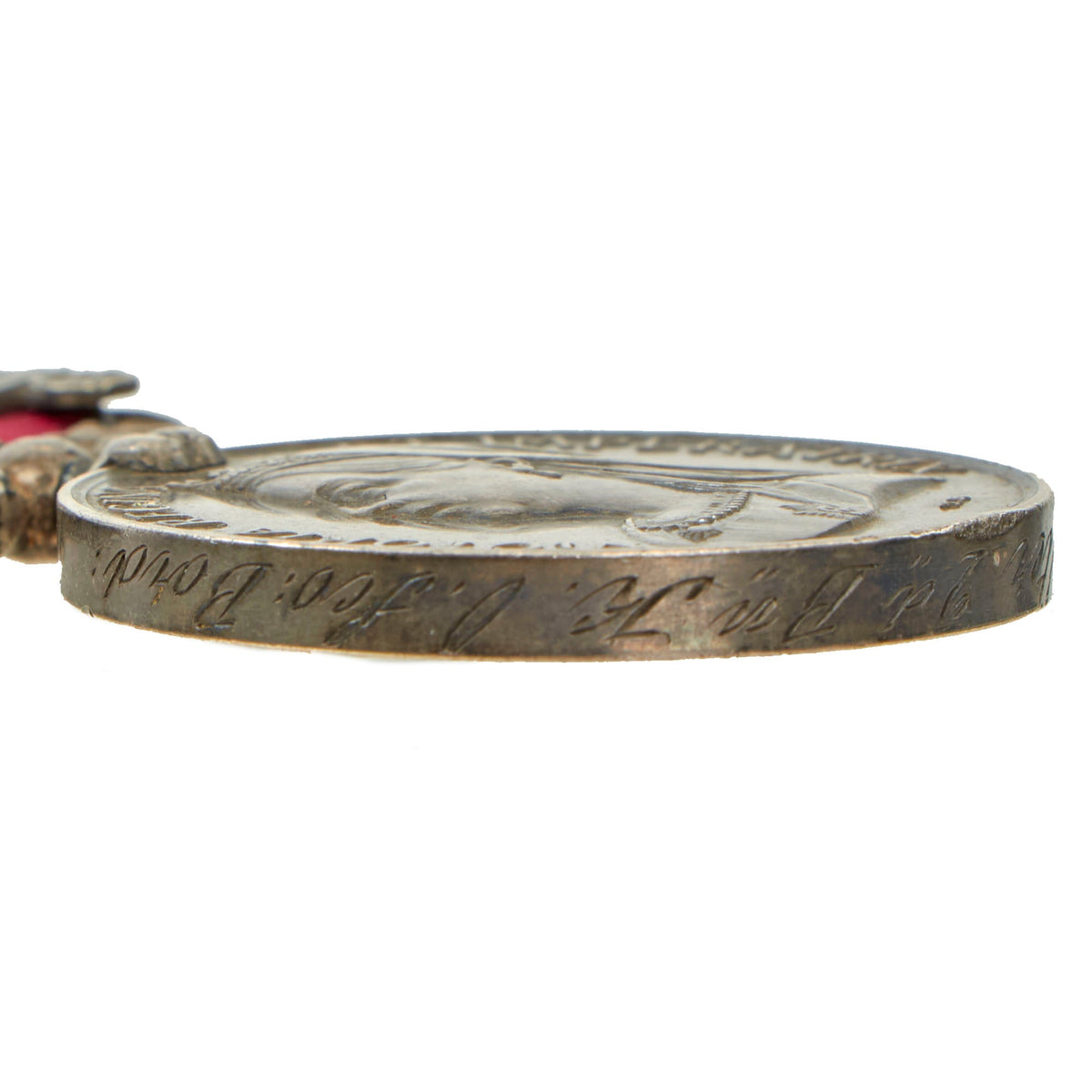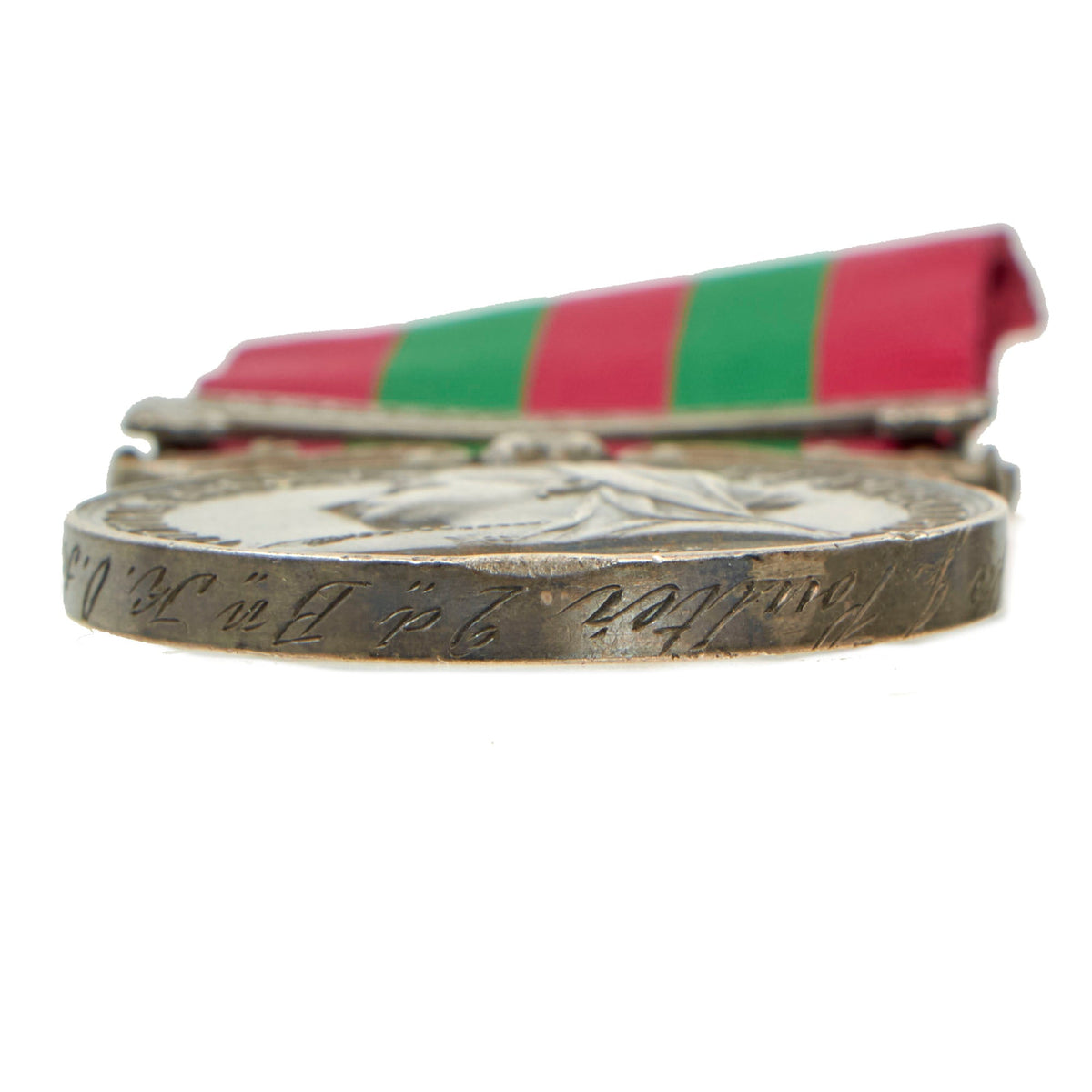Original British Victorian Era Rim Named India Campaign Medal With Relief of Chitral 1895” Clasp For Private J. Poulter, 2nd Battalion King’s Own Scottish Borderers Original Items
$ 395,00 $ 118,50
Original Item: Only One Available. This is an excellent example of a Victorian Era India Campaign Medal with clasp for the Relief of Chitral 1895 clasp. The medal features a lovely rim engraved edge, that bares the name and information regarding PTE J. POULTER 2D BN K. O. SCO. BORD.
This is for Private James Poulter who served with the 2nd Battalion, King’s Own Scottish Borders after serving with the 3rd West Yorkshire Regiment. He enlisted in 1890 and received a medically unfit discharge in 1897, dying in 1912. Not much could be found on his service but with the proper resources it should be no issue locating any surviving records.
The India Medal was a campaign medal approved in 1896 for issue to officers and men of the British and Indian armies.
The India Medal was awarded for various minor military campaigns in India, chiefly for service on the North-West Frontier during 1895 to 1902. This medal replaced the India General Service Medal (1854). Each campaign was represented by a clasp on the ribbon; seven were sanctioned.
The medal was awarded in silver to soldiers of the British and Indian armies, and in bronze to native bearers and servants.
The obverse shows the profile of Queen Victoria or, for those awarded the medal with the Waziristan 1901–02 clasp, King Edward VII, both with a suitable inscription.
The reverse, designed by G. W. de Saulles, portrays a British and an Indian soldier together carrying a standard with the inscription “India 1895”, although the Edward VII version omits the date.
The 1.25 inches (32 mm) wide ribbon had five equal stripes of red, green, red, green, red. The ribbon does appear to be a more modern replacement.
The name and details of the recipient were engraved on the edge of the medal, normally in running script, as described above.
The clasp that was authorized for issue that is present on this example is the Relief of Chitral 1895 (7 March – 15 August 1895). The Chitral Expedition was a military expedition in 1895 sent by the British authorities to relieve the fort at Chitral, which was under siege after a local coup following the death of the old ruler. An intervening British force of about 400 men was besieged in the fort until it was relieved by two expeditions, a small one from Gilgit and a larger one from Peshawar.
This is a lovely medal, packed with great research potential. Comes more than ready for further research and display.
Fast Shipping with Professional Packaging
Thanks to our longstanding association with UPS FedEx DHL, and other major international carriers, we are able to provide a range of shipping options. Our warehouse staff is expertly trained and will wrap your products according to our exact and precise specifications. Prior to shipping, your goods will be thoroughly examined and securely secured. We ship to thousands clients each day across multiple countries. This shows how we're dedicated to be the largest retailer on the internet. Warehouses and distribution centres can be located throughout Europe as well as the USA.
Note: Orders with more than one item will be assigned a processing date depending on the item.
Before shipping before shipping, we'll conduct a thorough inspection of the items you have ordered. Today, the majority of orders will be delivered within 48 hours. The delivery time will be between 3-7 days.
Returns
The stock is dynamic and we cannot completely manage it because multiple stakeholders are involved, including our factory and warehouse. So the actual stock may alter at any time. It's possible that you may not receive your order once the order has been made.
Our policy is valid for a period of 30 days. If you don't receive the product within 30 days, we are not able to issue a refund or an exchange.
You can only return an item if it is unused and in the same state as the day you received it. You must have the item in its original packaging.
Related products
Uncategorized
Uncategorized
Uncategorized
Uncategorized
Uncategorized
Uncategorized
Uncategorized
Band of Brothers ORIGINAL GERMAN WWII Le. F.H. 18 10.5cm ARTILLERY PIECE Original Items
Uncategorized
Uncategorized
Uncategorized
Angolan Rebel 1970s era 60mm Inert Display Mortar from Angolan Civil War Original Items
Uncategorized
Uncategorized
Australian WWII Owen MK1 Machine Carbine SMG Custom Fabricated Replica with Sling Original Items
Uncategorized
Uncategorized
Uncategorized
Uncategorized
Uncategorized
Uncategorized
Uncategorized
Uncategorized
Uncategorized
Armoured Fighting Vehicles of the World: AFVs of World War One (Hardcover Book) New Made Items
